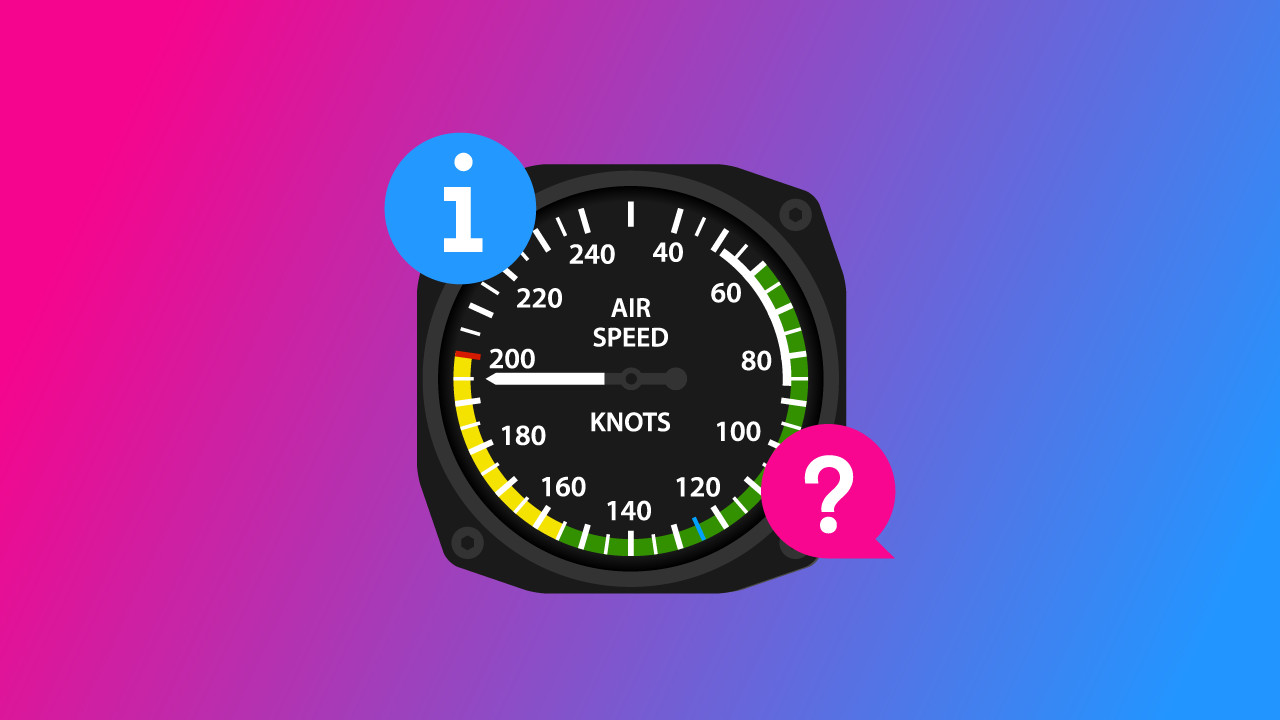Welcome to the world of aviation, where acronyms are everywhere! You’ve probably encountered the terms VLE and VLO during your flight training. But what do they mean?
Let’s start with a simple truth: the sky is not a place for guesswork. As pilots, understanding our aircraft’s limitations is crucial to ensuring our safety and the safety of our passengers.
In this article, we’ll demystify VLE and VLO speeds and make you a safer pilot.
Key Takeaways
- VLO is the max speed to extend or retract landing gear.
- VLE is the max speed to fly with gear extended.
- VLE is usually higher than VLO because moving gear at high speeds adds stress.
- You can check your POH or AFM for exact V-speeds.
What Is the Difference Between VLE and VLO?
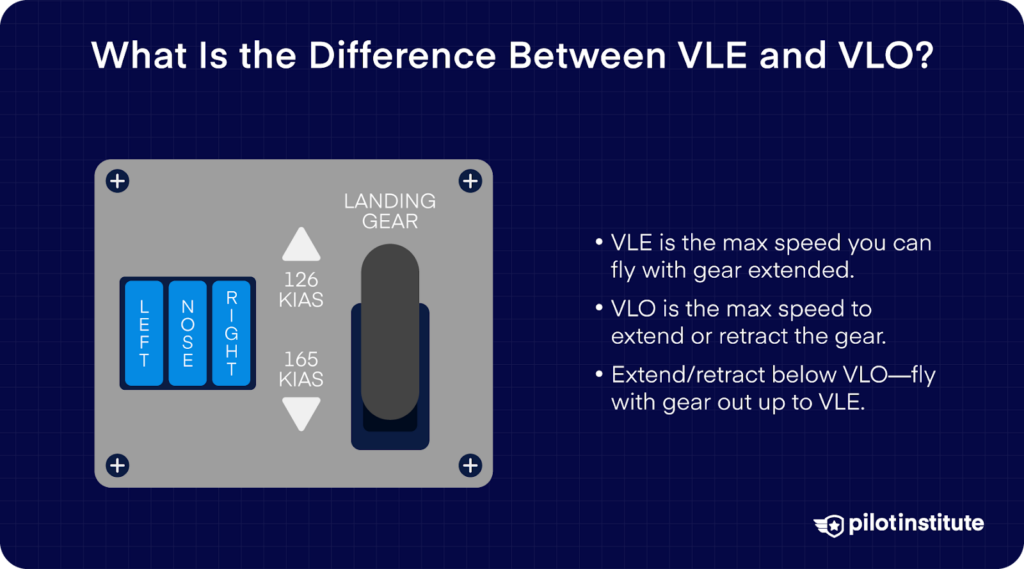
VLE, or Maximum Landing Gear Extended Speed, is the highest speed at which an aircraft can safely fly with the landing gear extended.
On the other hand, VLO, or Maximum Landing Gear Operating Speed, is the top speed at which you can safely extend or retract the landing gear.
In other words, you can only retract or extend the landing gear below the VLO (operating) speed, but you can fly with the gear extended up to the VLE (extended) speed.
Why Is VLE Higher Than VLO?
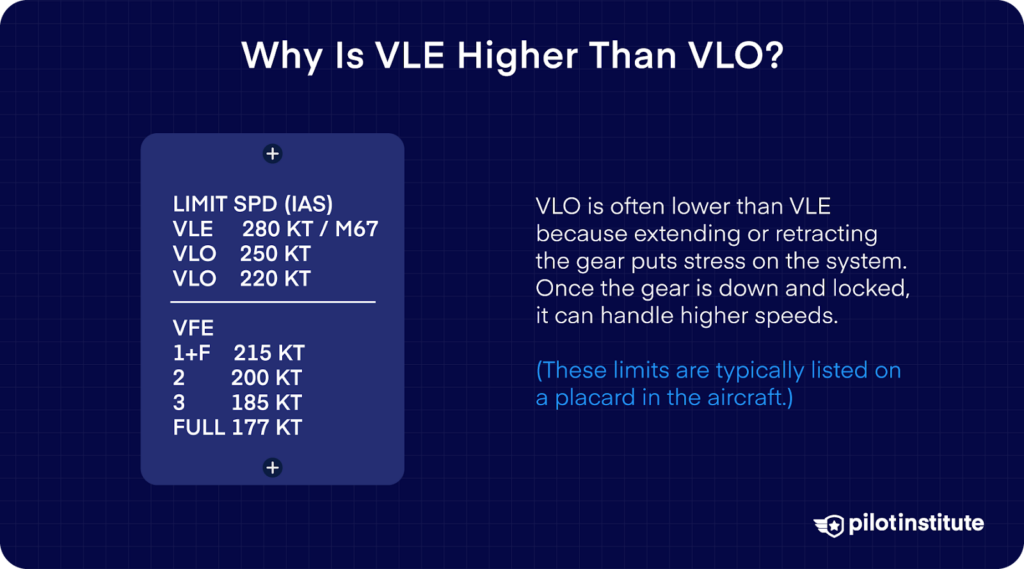
It’s common to find that the VLE speed is higher than the VLO speed in many aircraft.
The reason behind this is that the process of extending or retracting the landing gear involves a change in how airflow impacts the landing gear, which can cause additional stress on the gear system.
Therefore, the speed limit (VLO) for these operations is often lower to prevent damage. Once fully extended and locked, the gear can handle higher speeds, hence the typically higher VLE.
Let’s take a closer look at how this works in the context of VLO.
Landing Gear Operating Speed (VLO) Explained
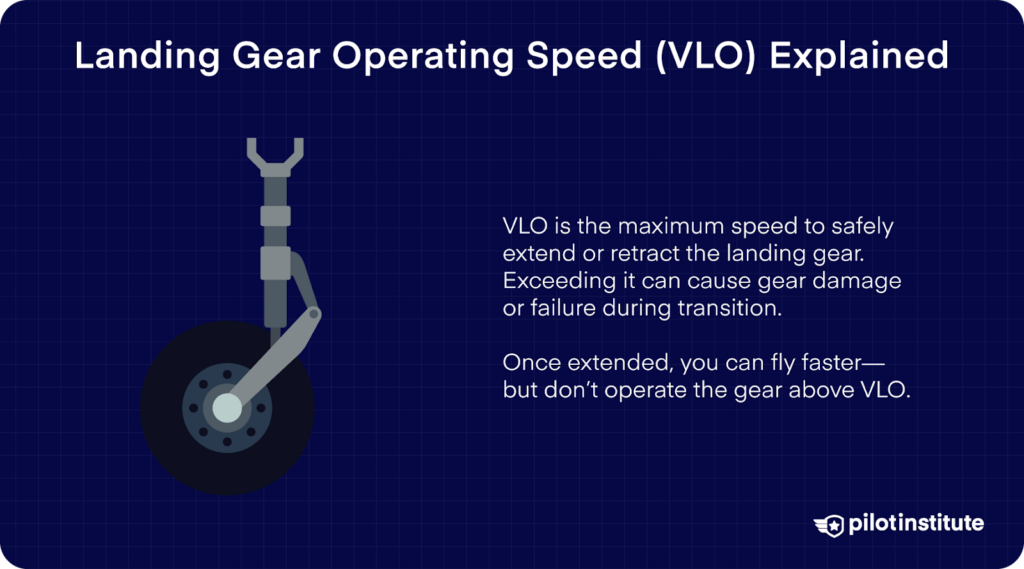
You’re on the final approach. ATC had you fly at maximum speeds to ensure separation from other traffic. Now it’s time to extend the landing gear and complete your final approach checklist.
There’s just one problem – you’re too fast.
VLO is the highest speed at which you can safely extend or retract your landing gear. It’s about managing the dynamic forces and potential aerodynamic stresses that moving parts experience during gear operation. In other words, VLO protects your landing gear from damage during these transitions.
Why does VLO matter? Simply put, if you exceed VLO while operating your landing gear, you risk a landing gear malfunction or even failure. This could result in a serious situation, with the landing gear unable to extend or retract as needed.
So, keep a keen eye on that airspeed indicator before you retract or extend your landing gear!
But what about when you’re landing gear is already extended?
Landing Gear Extended Speed (VLE) Explained

Once you’ve extended your landing gear, there’s another crucial speed to remember – the Maximum Landing Gear Extended Speed, or VLE.
The VLE is the top speed at which your aircraft can safely fly with the landing gear fully extended. It’s set by the aircraft manufacturer based on the design and strength of the landing gear system, considering factors like aerodynamic forces and potential turbulence.
Why is VLE so important? Simply put, exceeding VLE can result in structural damage to the landing gear. The higher the speed, the greater the aerodynamic stress on the landing gear components.
In a worst-case scenario, flying beyond the VLE could lead to a landing gear failure, a situation no pilot wants to face. So, when your gear is down, ensure you’re keeping a close watch on your airspeed and staying within the VLE.
Factors Affecting VLE and VLO

VLE and VLO aren’t just numbers plucked out of thin air. Several critical factors come into play in determining these important speed limitations.
Firstly, the design and mechanical robustness of the landing gear system are pivotal. This involves how the gear is designed to extend and retract, the strength of the mechanical components, and the performance of the hydraulic or electrical systems involved.
Secondly, the aerodynamic forces that act on the landing gear during its operation also play a significant role. These forces can be substantial during high-speed gear operation, potentially causing damage or malfunction.
Lastly, the aircraft manufacturer’s specified safety margins also influence the VLO. These margins account for unexpected scenarios or conditions, ensuring the landing gear can operate safely even if the maximum speeds are slightly exceeded.
Where to Find Your Aircraft’s VLE and VLO Speeds
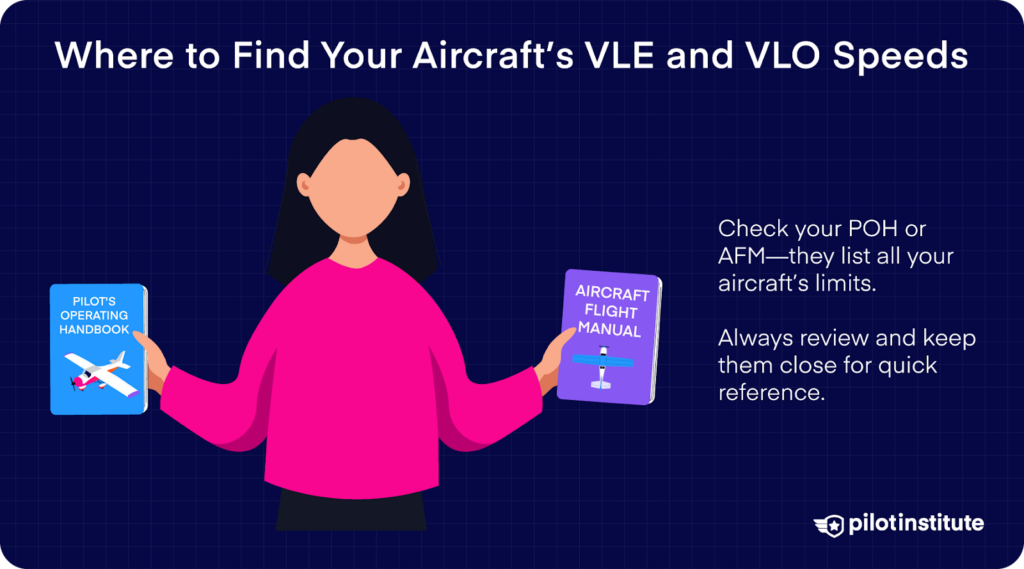
Knowing the VLE and VLO speeds of your aircraft is vital. But where can you find this crucial information?
The Pilot’s Operating Handbook (POH) or the Aircraft Flight Manual (AFM) are the first places you should look. These documents provide extensive information about your aircraft’s capabilities and limitations, including the VLE and VLO speeds.
Reviewing these manuals thoroughly and keeping them handy for quick reference is essential.
Additionally, many aircraft feature placards or markings in the cockpit that indicate important speed limitations. These may be near the airspeed indicator or the landing gear controls.
While these placards provide a helpful reminder, they should not replace a thorough understanding of your aircraft’s limitations from the POH or AFM.
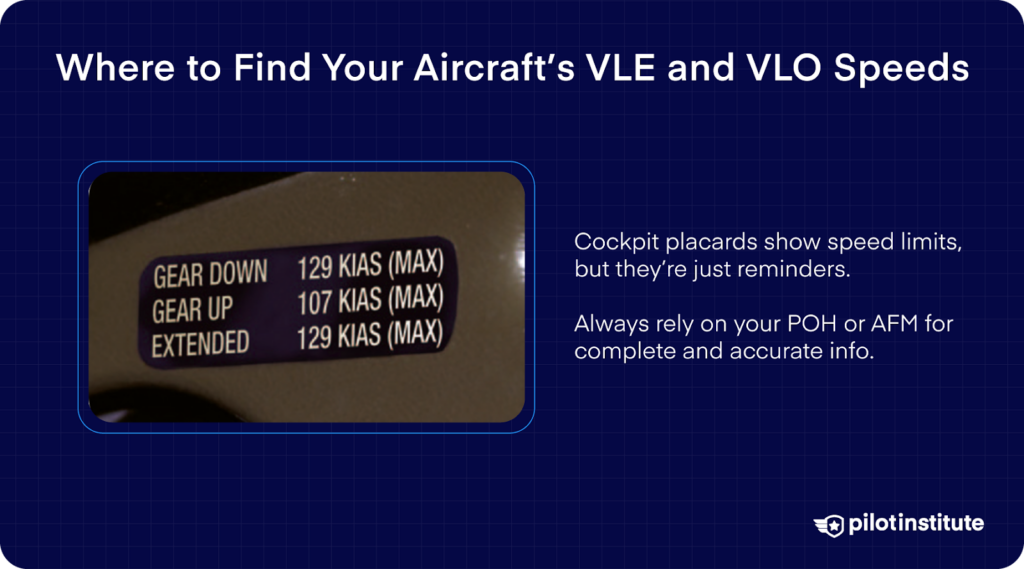
Remember, each aircraft model is unique. The VLE and VLO speeds for one type of aircraft might not be the same for another. Always refer to the specific documentation for your aircraft.
How to Avoid Exceeding VLE and VLO
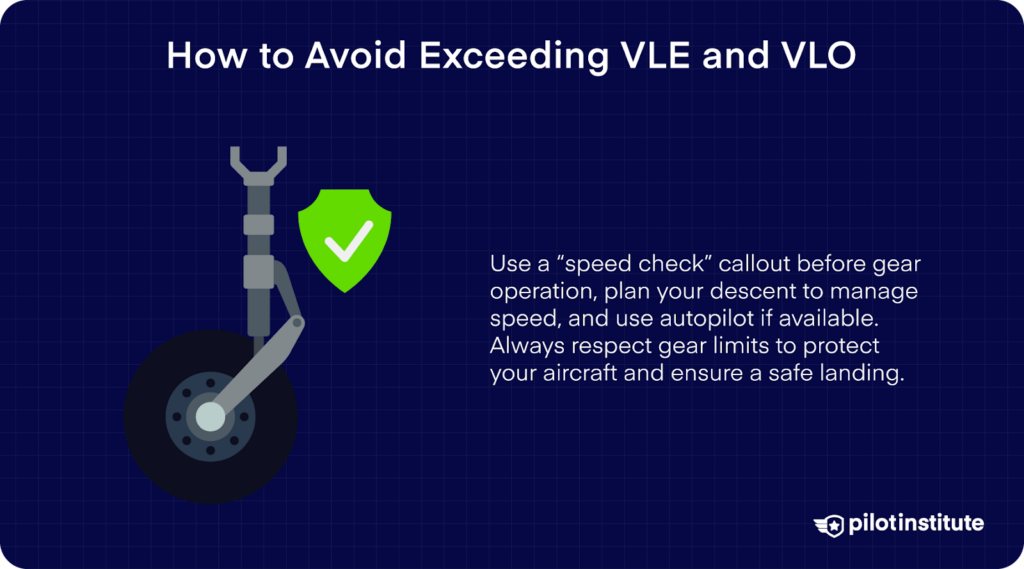
Now that we know what VLE and VLO are and why they’re essential, let’s discuss how to avoid exceeding these speeds.
In the high-speed environment of modern aviation, it’s easy to inadvertently push beyond these limits, but with a few practical strategies, you can keep your speed in check.
Firstly, adopting airline procedures can be beneficial even for general aviation pilots. One common practice is to verbally confirm your speed before extending or retracting the landing gear.
A simple callout like “speed check” can remind you and other crew members to verify that you’re below the VLO before operating the landing gear.
Having a structured approach to your descent and landing procedures is another helpful strategy. By planning your descents, including when and where you’ll reduce speed and extend the landing gear, you can ensure you’re always within the proper speed envelope when operating your landing gear.
Moreover, use your aircraft’s automation to your advantage. If your aircraft is equipped with an autopilot or flight management system, use it to help manage your speed during critical phases of flight.
Remember, your aircraft’s landing gear isn’t designed to handle the stresses associated with high-speed flight. Always respect the VLE and VLO speeds and make them an integral part of your flight management procedures.
Doing so will help ensure your aircraft’s safe and smooth operation, extending its service life and keeping you and your passengers safe.
Conclusion
Understanding and respecting aircraft limitations is integral to being a competent and safe pilot. It’s not just about knowing the numbers; it’s about understanding why these limitations exist and the serious consequences of exceeding them.
Remember that the information for your specific aircraft is always readily available in the POH or AFM and often directly in the cockpit on placards.
Make it a point to familiarize yourself with these sources and use them as guides. With this knowledge, you’re one step closer to mastering your aircraft’s limitations and ensuring safe flights.
So here’s to clear skies and safe landings. Keep learning, keep flying, and always respect your aircraft’s limits!

